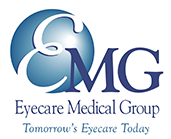
June is Cataract Awareness month, as recognized by the American Academy of Ophthalmology. While you may be aware of the general existence of cataracts, you may not know what exactly they are and what having them means.
Many people associate cataracts with old age. In actuality, being 40 or older puts you at high risk for cataracts. You can even get them at any age. Here’s what you should know about cataracts:
What Are Cataracts?
Cataracts occur when the natural lens in your eye becomes cloudy. This happens as a result of aging.
With age, the cells in your lens start to become more opaque. Cataracts can also be associated with eye trauma and conditions like diabetes.
But more commonly, cataracts simply happen as a symptom of getting older. Cataracts are extremely common and affect one in six adults above the age of 40.
For adults 80 and older, the chances of having cataracts are over half. They’re definitely something you should be aware of if you aren’t already!
Cataract Symptoms
The most common cataract symptoms include:
- Trouble seeing in low light
- Excessive glare
- Seeing halos around light sources
- Blurry vision
- Trouble seeing contrast
- Light sensitivity
Because cataracts can develop slowly over a period of months or even years, many people don’t even notice them when they do develop symptoms. Symptoms may be mistaken for worsening vision.
Many older patients with cataracts also have presbyopia, which is age-related farsightedness. Cataract symptoms may appear to be presbyopia.
But where presbyopia makes it harder to see up close, cataracts make it harder to see in low light. If you have trouble reading unless you have plenty of light, that’s a good sign that your issue is cataracts.
But it is hard to tell sometimes, especially if you have both cataracts and presbyopia. This is why it’s important to have regular eye exams, especially by the time you turn 40.
Having regular eye exams means that even if you don’t notice any change in your vision, your doctor will be able to see and diagnose your cataracts. Regular eye exams allow your eye doctor to examine your eyes, both inside and out.
Treatment Options
After receiving a cataract diagnosis, it doesn’t always mean you need cataract surgery right away. If your visual symptoms aren’t severe, your doctor will likely recommend you wait.
The only treatment option for cataracts is having them removed with cataract surgery. Most eye doctors only recommend cataract surgery when cataracts begin to affect a patient’s quality of life.
This is because cataracts can develop so slowly that some people never need treatment. But when your cataracts make it difficult to do daily tasks, cataract surgery is a good option.
It’s considered a very low-risk procedure. In fact, it’s the most commonly performed medical procedure in the US.
The great thing about cataract surgery is the procedure can completely restore vision loss due to cataracts. For some people, that means it’s the first time they can see clearly in years!
Think the signs of cataracts sound familiar? Schedule a cataract screening at Eyecare Medical Group in Portland, ME with one of our fantastic ophthalmologists!





